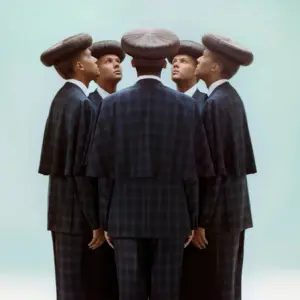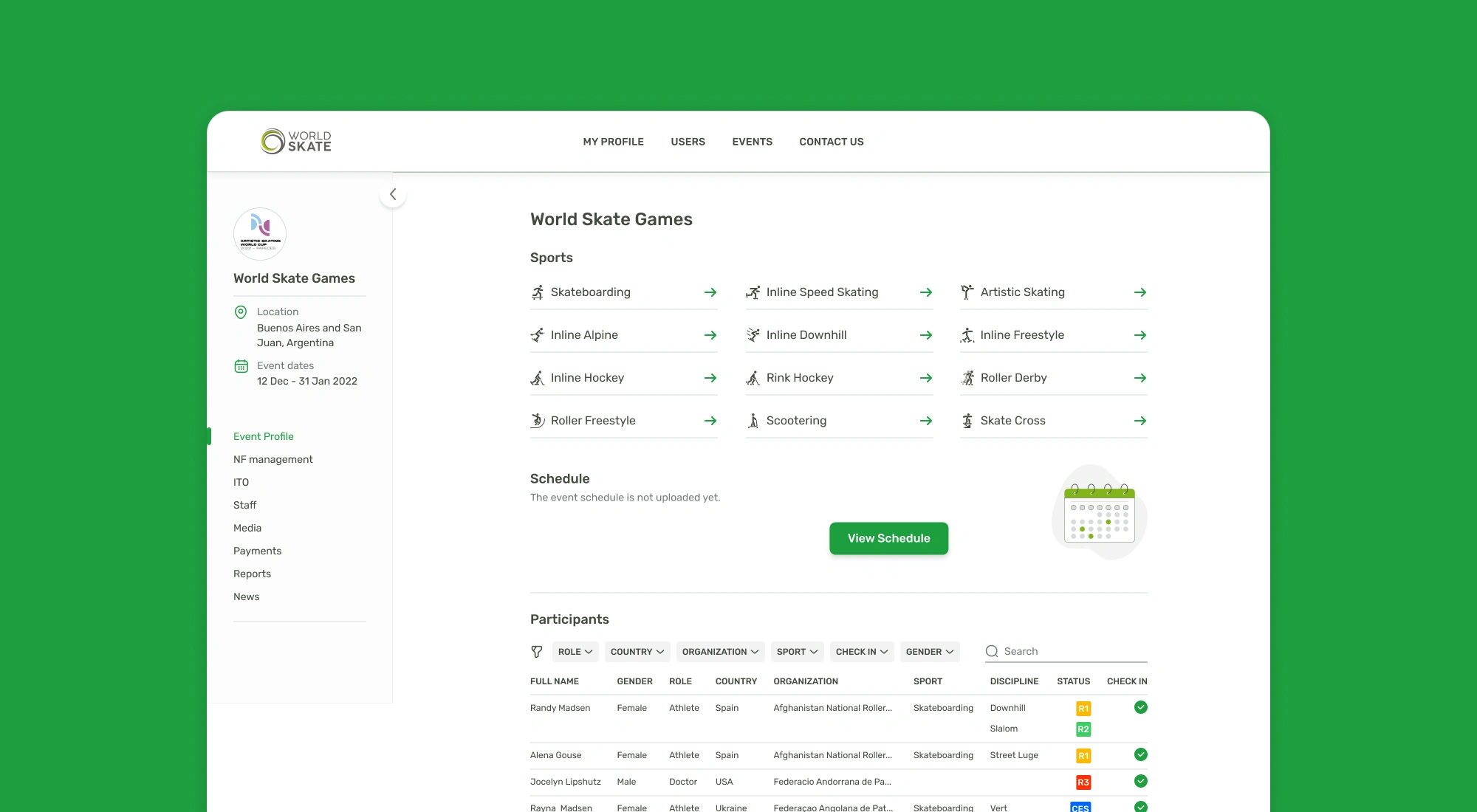
WorldSkate Infinity
Product Design
UX Design
Cross-platform Design
Figma

Jira

Miro

HotJiar
World Skate, the global governing body for 12 diverse roller sports — from skateboarding to roller derby — faced a monumental challenge. Registration processes for athletes, federations, and events were stuck in the past: piles of paper forms, cash-only payments, and logistical nightmares for event organizers.
The mission was to create a scalable digital platform (Web and Mobile app) that seamlessly connects World Skate, National Federations, Athletes and a variety of supporting roles. I was eager to modernize how global events are managed, how organizations and individual athletes register, pay, and compete, while also accommodating the unique rules and complexities of each sport. This platform wasn’t just a tool — it was a digital-first revolution for a traditionally offline world.
As the sole designer, I was tasked with crafting a system that worked as the core platform for every type of user; accommodating the sets of various processes and needs (procedural, legal, and social), spanning across continents.
11 sports, 30 Disciplines
Fully evaluated & integrated into the platform.
500+ Athletes
Managed during World Skate Games 2023 in Buenos Aires.
100% UX/UI Overhaul
Simplified athlete registration and event management.
Automated Payments
Streamlined financial transactions and user control.
Olympic Qualification
The platform successfully managed the World Skateboarding Tournament in Rome, 2022.
Scalable & Future-Proof
Built for ongoing expansion and feature development.
Stage 1: Analysis & Roles Functionality Definition
To accommodate this vast role differentiation, I designed a high-level architecture that defines the logic flow, ensuring that each role on the platform has a tailored experience based on their permissions and needs.
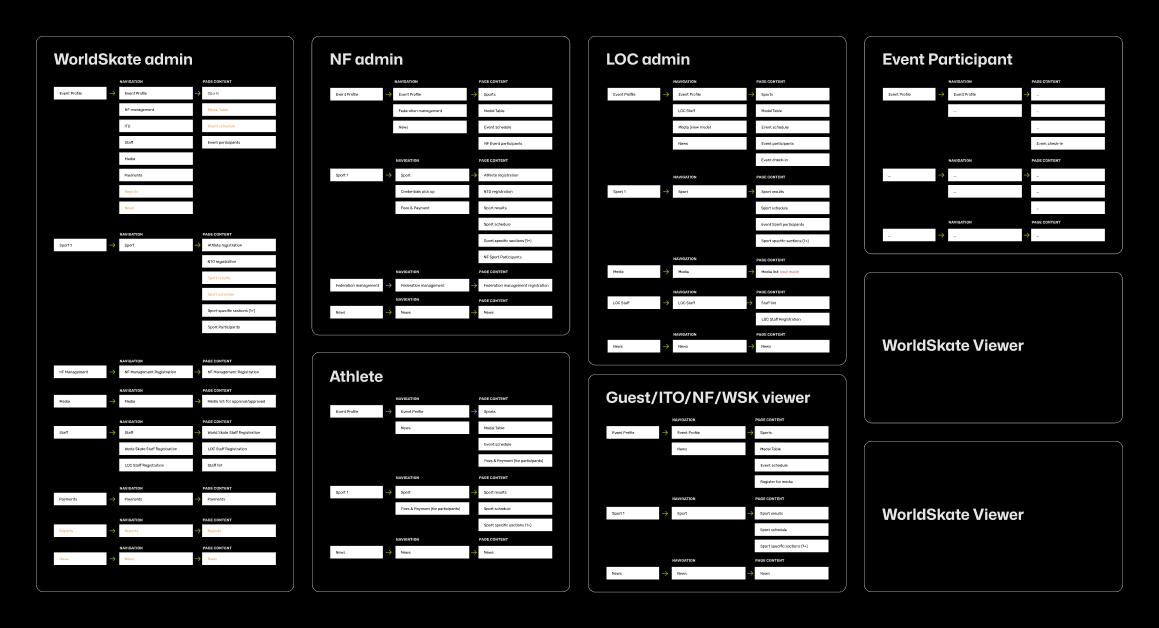
Stage 2: Deep Dive into the Roles’ Actual Differences
After establishing the high-level architecture, the next step was to dive deeper into understanding the actual differences between roles and ensuring the platform’s functionality provided a seamless experience.
1. Tailored Onboarding & Event Management Flows
I took a top-down approach, starting with the most complex role (super-admin) and working down to a everyday user. This method helped minimize errors while creating role-specific flows. Each role had unique access requirements. For example:
Admins don’t need anti-doping documents because they’re not athletes.
National Federation Representatives must select certified sports and provide federation details.
International Technical Organisation (ITO) users choose both sports and disciplines, along with their job titles.
The differences in role access were vast, and these examples show how the platform had to accommodate each with precise functionality.
2. Simplified Onboarding Process
The goal was to simplify the onboarding process while addressing both business and user needs.
I identified shared data fields across roles, allowing certain data to be added after initial sign-up.
The outcome: a 2-step verification process that swiftly turns users into active platform members.
This reduced friction during sign-up, allowing users to complete their profile later without disrupting the registration flow.
3. Role-Specific Flows
After quick sign-up, users are guided to role-specific flows, where they select their role on the platform.
This approach ensures that users only provide relevant data for their specific role, streamlining the process and enhancing user experience.
By avoiding unnecessary data input, we improved efficiency and ensured a seamless onboarding experience.

Stage 3: Wireframes, Design System & UI
When setting up the design approach, I initially focused on the core flows — onboarding, profile setup, and skateboarding. However, the majority of challenges that tested my design system came later in the process.
Prepared for this, I started with the necessary fields, font choices, icon styles, and input setup, allowing me to build the larger system progressively, adding new components based on the initial fields and data input variety.
The platform’s visual identity aligns with WorldSkate’s established brand to ensure continuity and maintain a consistent trace of WorldSkate throughout the user experience.
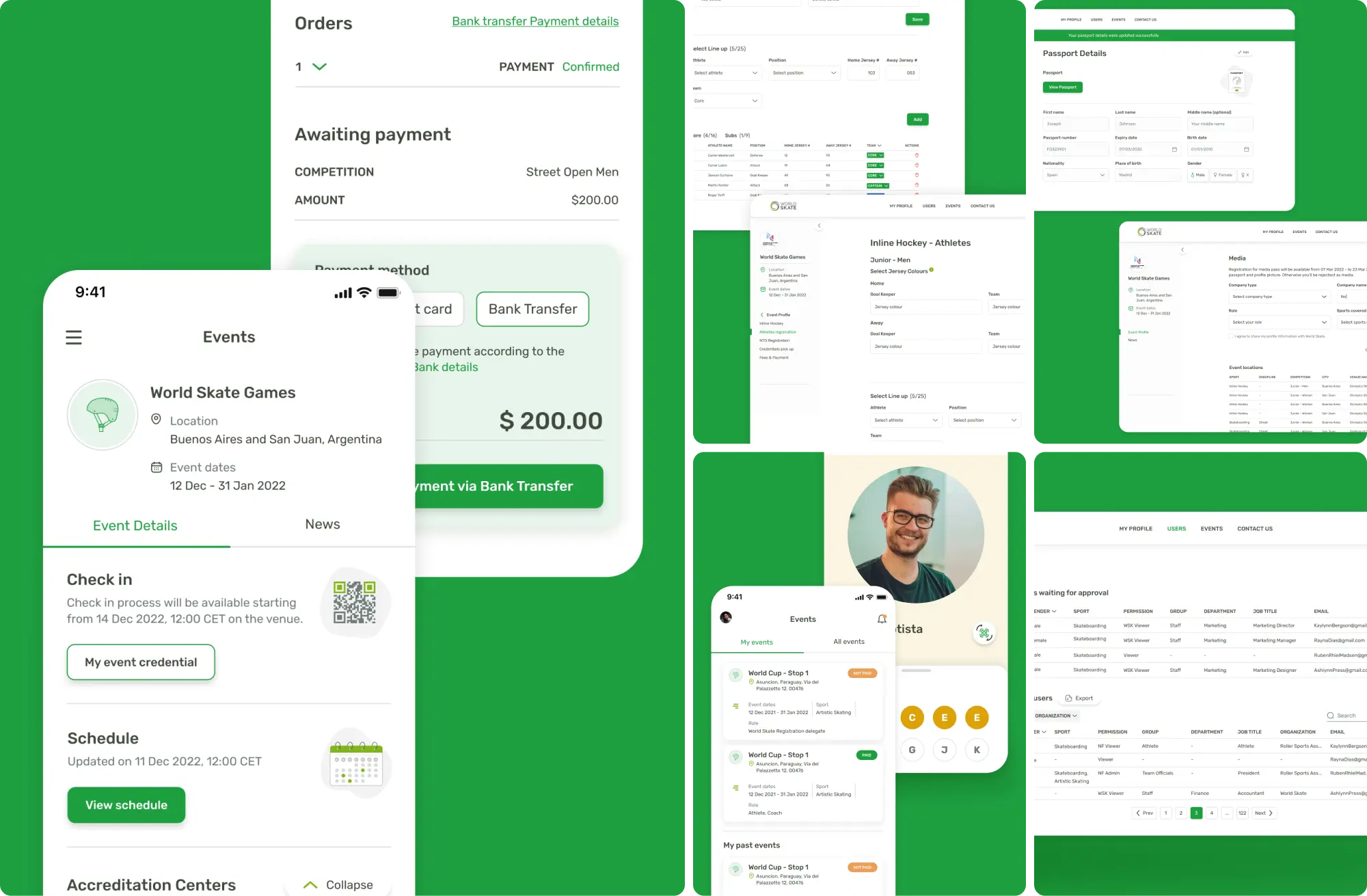
Stage 4: Sports Management
As the product grew, we began to incorporate new sports such as artistic skating, roller derby, scootering, inline hockey, and many more. Each sport brought its own set of disciplines, competitions, registration quirks and rules, making the sport registration process for events a complex and crucial part of the configuration. For instance, skateboarding is an individual competition, while hockey and derby are team sports. Artistic skating could involve pairs or even performances that require music submissions!
These unique requirements demanded a special UX approach to balance the different sets of rules and maintain a smooth user experience. I’m proud to say I successfully navigated these challenges — from adjusting flow logic to resolving initial bumps, to expanding the design system and adding new components as needed.
Another crucial part of this stage was eliminating unnecessary bureaucracy. By integrating multiple online payment methods, I ensured that athletes and teams could register and pay hassle-free, no longer dealing with outdated paperwork or manual payment confirmations. Now federations, event organizers, and competitors can focus on what really matters — getting on the field (or the ramp) instead of getting lost in administrative chaos.
Below is a bird’s-eye view of the logic and detailed flow for some sports, from registration to payment — because why not make a complicated process look effortless?
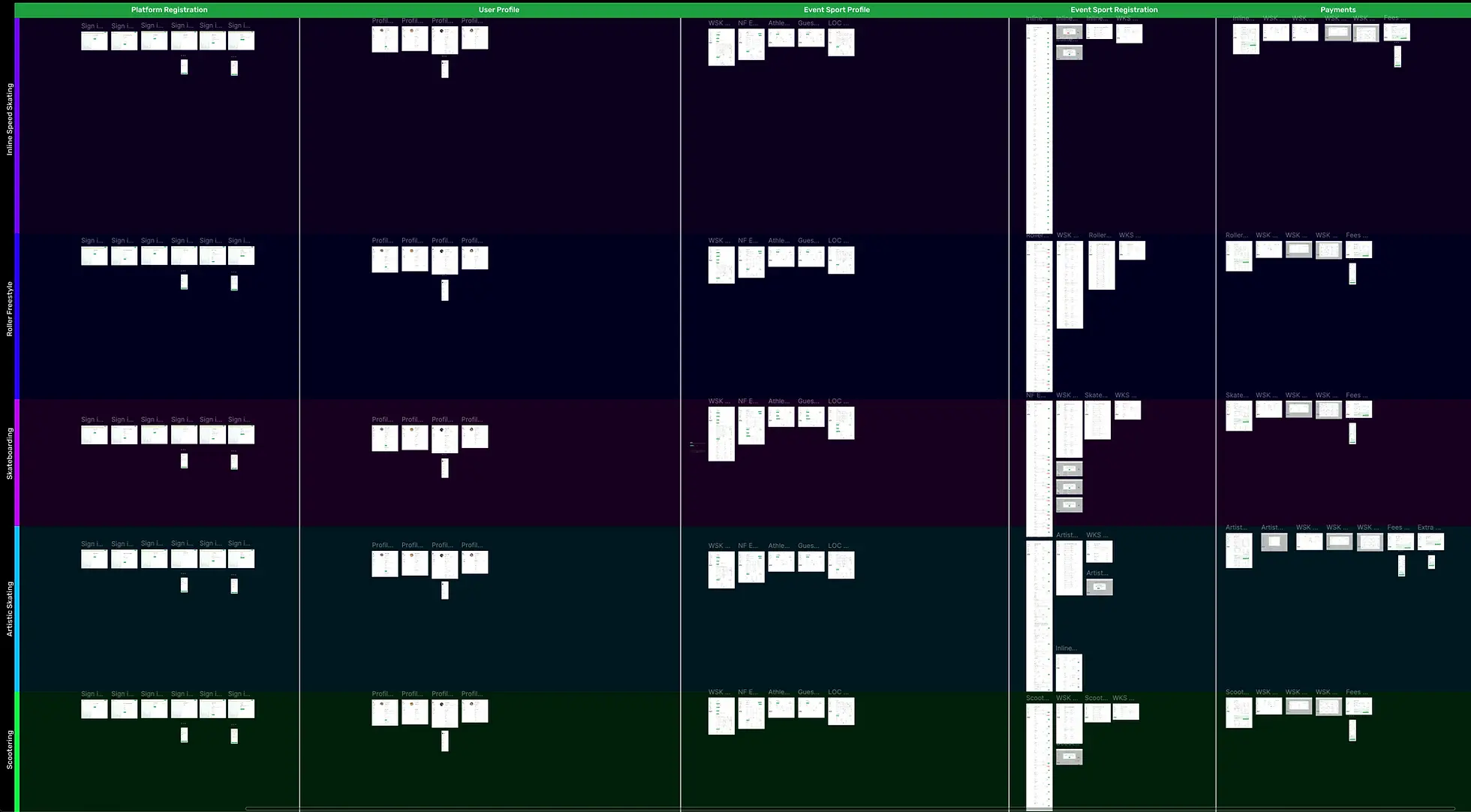
Smart Little Things
Even though the WorldSkate Infinity project is no joke but rather a bold and ambitious product, I want to highlight some seemingly small – yet warm – features I’ve designed. Because sometimes, it’s the little things that make the experience truly special.
1. Check-in
Many years ago, printing event badges was the norm, and the coolest ones you kept as a memory. What can I say? Guilty! I was the same and still have a bunch of them from way back. Knowing how important it is to have that tiny piece of nostalgia, yet staying aligned with a paperless vision, I designed digital event badges. Now, they can be saved on your phone as a memory, shared on social media, and — bonus! — they help skip long check-in lines and reduce chaos on the first day of the event. Oh, and did I mention? The same applies to final certificates. So yeah, no more lost papers — just digital convenience with a touch of sentimentality.
2. News
At first glance, you might think, why do we need another newsfeed when there are tons of social media platforms? I hear you! But let’s be real — haven’t you ever struggled to find the right event group? Or been bombarded with scattered updates across multiple channels? That’s where the event-related newsfeed on the WorldSkate platform comes in. It delivers real-time updates specific to the event you’re attending — whether it’s a schedule change, a last-minute delay, or fresh results from a discipline you care about. No need to dig through endless posts — everything you need, right there in your app. A full event experience, streamlined.
Achievements
I designed a platform that became the backbone of multiple world tours across skateboarding, artistic skating, inline hockey, roller derby, and more — proving itself as a reliable system for Olympic qualification. By structuring the athlete registration and event management flows, I cut down manual work for federations and made the process faster and smoother. As the platform expanded, I ensured it could adapt to the unique rules and competition formats of each sport without breaking the UX. I also introduced a digital check-in system, eliminating long queues while keeping the nostalgic touch of event badges. Beyond just functionality, I focused on creating a seamless, intuitive experience that allows athletes, federations, and event organizers to focus on what truly matters — competing on the global stage.
